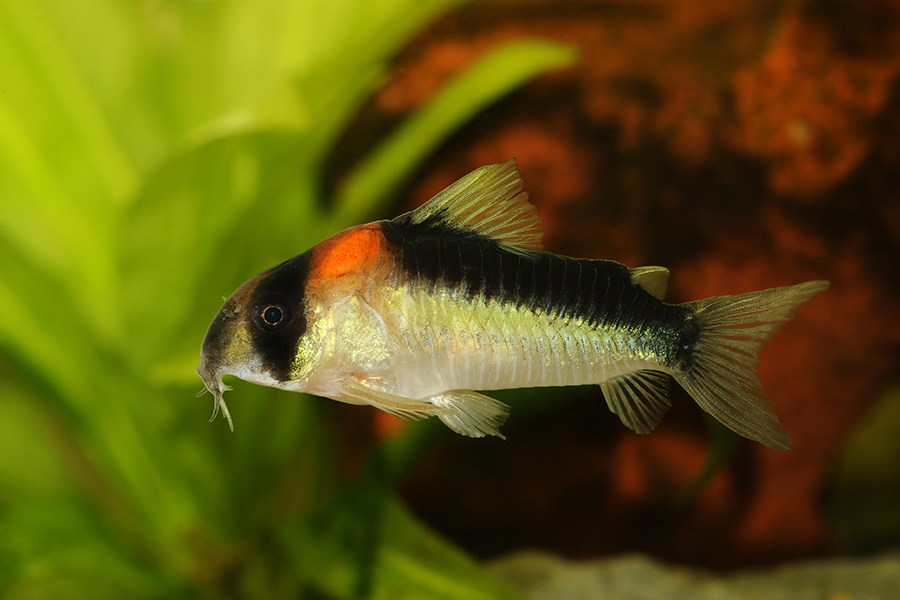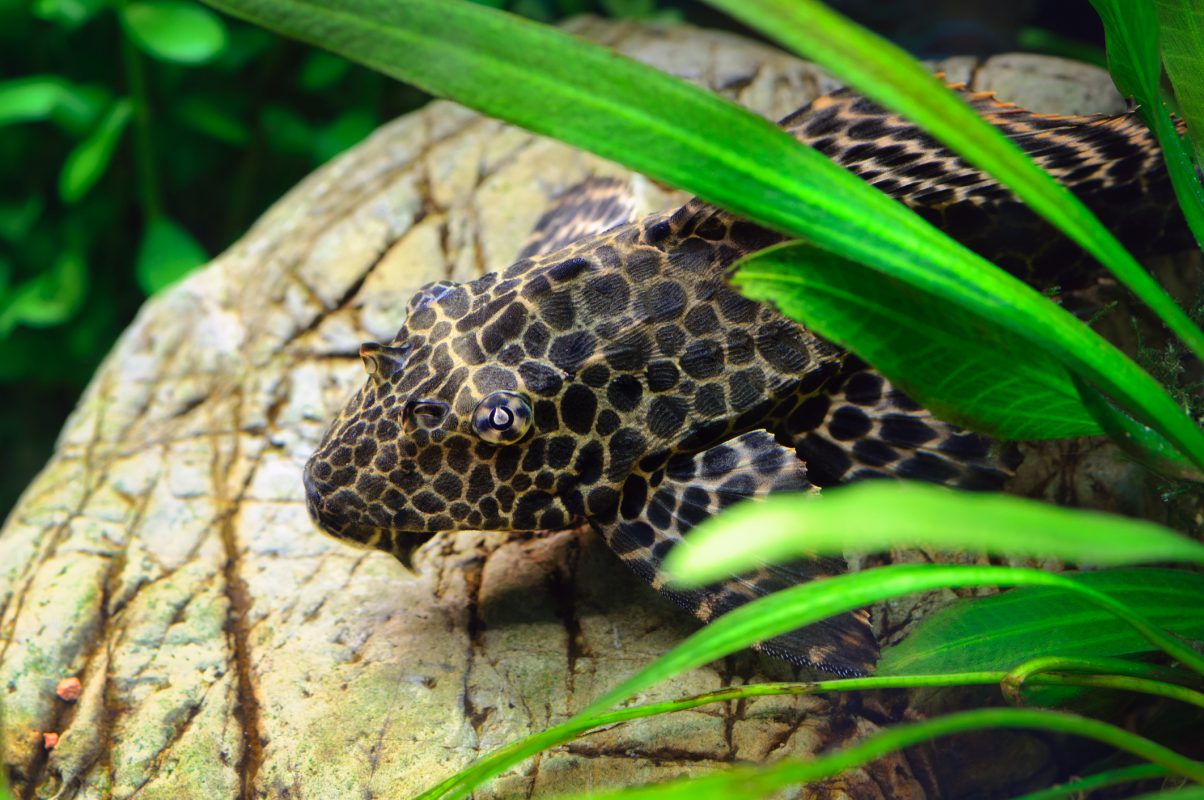In order to recognise a poorly fish, we must first know what a fish looks like and how it behaves when healthy. We can only recognise the ‘abnormal’ when we know what is normal.
For example, a goldfish keeper may become concerned about the presence of small white spots on the gill covers and pectoral fins of their fish. Further investigation will lead them to discover that these small white spots are not a sign of disease but are actually special spawning pimples that cover certain parts of male goldfish at spawning time.
A tropical fishkeeper could become concerned that their Synodontis catfish are swimming upside down – this could be a sign of a swim bladder disorder. Again further investigation will lead the fishkeeper to discover that the fish are actually ‘upside-down catfish’, which swim happily in an inverted position when juvenile, often resorting to a more conventional posture as adult fish.
These two examples highlight the need to know your fish! Know your fish starts before you have even purchased them from your aquatic store. When you read up on the potential size, feeding and water quality requirements of any potential new fish, try to also seek information about the natural appearance of the fish at different stages of their life cycle and their natural ‘normal’ behaviour. Kribensis cichlids (Pelvicachromis pulcher) for example show a markedly red belly at spawning time, this could be mistaken for bacterial erythrema. Clown loaches (Chromobotia macracanthus), are notorious for the eccentric behaviours. Youtube has a wealth of videos of healthy aquarium and pond fish, so these days we can see not only normal appearance but normal behaviour too.
Upon acquiring your fish, you should familiarise yourself with the individuals natural appearance and its behaviour. In the first few days in the tank, your new fish are likely to be very timid and may decline feeding, however as they settle most common freshwater aquarium inhabitants will venture out into the tank and respond to feeding.
Notice the swimming patterns of your fish, how quickly they eat food and the method of food intake. Feeding time offers an excellent time for a brief visual healthcheck of your fishes.
However, as stressed above, we must be familiar with ‘normal’ appearance and behaviour of healthy fish in order to recognise ‘abnormal’ and thus potential ill health.

Abnormal signs to look out for can be split into behavioural and morphological deviations from the accepted ‘normal’ state of your fish. Behavioural indicators of ill health include gasping for air at the water surface, a common sign of gill disease or water quality problems in most fishes – in air breathing fishes such as the Lungfish this is perfectly normal behaviour.
Changes in the swimming activity are a sure sign of potential ill health. If a normally active fish ceases swimming activity, becoming lethargic and swimming only when disturbed, then this is a strong indicator of ill health. For sedentary carnivorous fishes, this is again a common ‘normal’ behaviour. Fish infected by skin parasites or irritated by certain water pollutants, will flick and scratch against objects in the aquarium or pond. Erratic darting motion instead of smooth swimming is often seen in small tropical aquarium fishes when they are infected by internal parasites or bacteria. These affect the swimbladder and occasionally the neuromuscular systems, which has an affect on posture and locomotory activity.
Assuming an abnormal posture, such as a lopsided gait or even fully upside-down, is usually a sign of a swimbladder problem, a common complaint in fancy aquarium goldfish. The same problems can also cause the fish to lose its normal neutral buoyancy, and they either sink or rise when at rest.
A fish that normally feeds voraciously, refusing food is a sure sign of ill health. As in all fish health problems, the first thing to check is that the water quality is within the preferred limits of the fish.
As can be seen we must carefully observe our fishes when they are healthy in order to recognise behavioural changes shown when they are sick.
The same is true for the external appearance of the fish, familiarise yourself with its colours, body contours and finnage. External signs of disease are all some deviation from the normal condition.
If a fish’s skin is irritated either by pollutant in the water such as ammonia, or by infection with a skin parasite, the first response the fish will show, (In addition to the flicking and scratching mentioned above), is overproduction of mucous. The mucous layer is highly protective and the fish increases its production when the skin is irritated. This overproduction of skin mucous makes the fish’s colours look duller and it assumes a grey hazy appearance.
Most external parasite infections cause generalised symptoms, one however, known as white spot, causes a very recognisable condition. As the name suggests, infection of the skin with the white spot parasite causes the fish to develop tiny white pimples over its body. The white spots are around 1mm in diameter, they tend to develop on the fins first before progressing over the body as the infection proceeds. Scaleless fishes such as Clown Loach are highly susceptible.
Another very recognisable condition is finrot, although there are many possible causes. The fins of a healthy fish should be complete, symmetrical and of a uniform consistency. During finrot the skin between the bony fin rays rots away leaving the fish with decaying tissue where the fins used to be. If the cause of the finrot is identified and treated, the fins rapidly grow back. Finrot is caused either by water pollution, most commonly extremes of pH or ammonia poisoning. Infection with certain types of bacteria can also cause the problem. The delicate tissue of the mouth is also prone to a similar necrosis.
Bacterial infection can also cause large open sores on the skin of the fish called ulcers. These are very damaging and must be treated early.
Many internal problems can manifest themselves with external symptoms. Damage to the muscle around the spine, or vertebral deformity can lead to spinal bending, here the fishes spine assumes a pronounced curvature and swimming is often affected. There are many causes of spinal damage.
Infection or damage to the delicate tissue behind the eye can lead to swelling which pushes the eye outwards – a condition known as exophthalmia or pop-eye. Often in these circumstances the fluid in the eye will turn cloudy also.
Recognition of disease in fish involves knowing what your fish look like, how they swim, feed, interact, and behave. It is only when we truly know our fish can we begin to recognise the early signs of an ill health problem.

